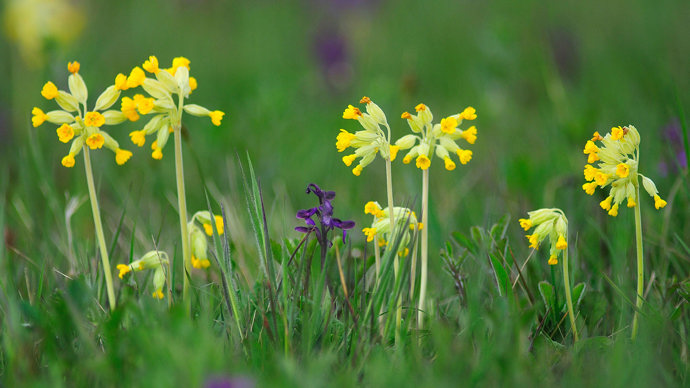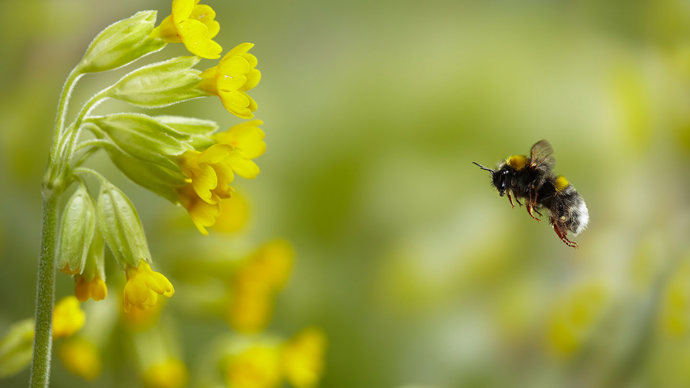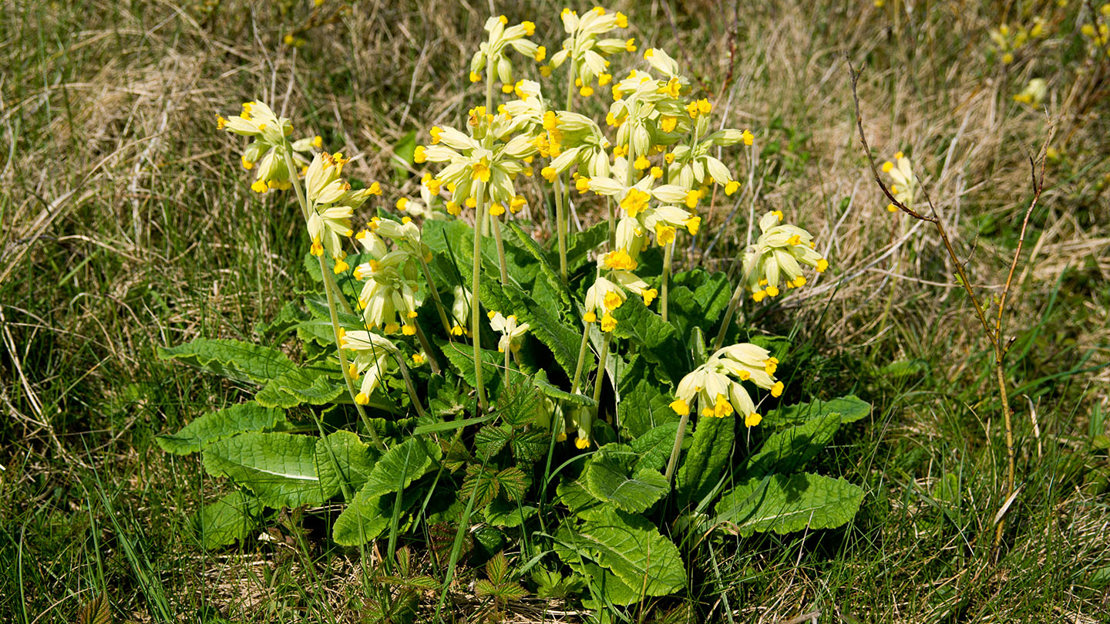Common name: cowslip
Scientific name: Primula veris
Family: Primroses
Origin: native
Flowering season: April to May
Habitat: grassland, woodland, ancient woodland, hedgerows
Simple yet lovely, cowslips are synonymous with spring and Easter. Find them in woods and meadows during springtime.
Common name: cowslip
Scientific name: Primula veris
Family: Primroses
Origin: native
Flowering season: April to May
Habitat: grassland, woodland, ancient woodland, hedgerows
Cowslip is an attractive flowering plant found in meadows and on woodland floors.
Leaves: dark green and wrinkled, and quite wide but narrow towards the end. The leaf edges are toothed, and a light cream-green vein can clearly be seen in the centre of the leaf. They grow in a basal rosette formation.
Flowers: bright yellow, bell-shaped flowers that have five petals with small indents on the top edge of each petal. The flowers are enclosed by a long, green, tube-shaped calyx (protective flower casing) and are found in clusters on each plant, all facing to one side.
Not to be confused with: oxlip (Primula elatior) which, though similar looking, has paler yellow flowers that open out further. Leaves are also very similar in shape but stop sharply by the base and don’t taper. Oxlips are also a much rarer plant, being found only in East Anglia. False oxlip (Primula veris x vulgaris), is a hybrid of cowslip and primrose so might be confused with those species. However, it is taller than cowslip and its flower clusters are not one-sided unlike the oxlip or cowslip.

Credit: Colin Varndell / naturepl.com
Cowslips are present across the UK. Look for them in meadows, grassland, woodland and verges as well as in gardens. They thrive on dry, calcareous (chalky) soils and flower between April and May.

Credit: Stephen Dalton / naturepl.com
Cowslips are important for wildlife, their flowers an early source of nectar for various insects including bees, beetles and butterflies such as the brimstone. Cowslip is also a food plant for the Duke of Burgundy butterfly.
The name 'cowslip' may refer to the fact that cowslips (and oxlips) are often found growing in boggy pasture used by cattle.
The plant was traditionally used to treat sleeping problems as it is said to have a sedative quality, as well as the flowers being used to help treat coughs.
Cowslip leaves are used in Spanish cooking and have a slightly citrusy flavour. The flowers are traditionally used to flavour English country wine.

Cowslips were traditionally picked on May Day to adorn garlands but also for other celebrations, such as weddings. Cowslips have also been called ‘St. Peter’s keys’ or ‘keys of heaven’ because the one-sided flower heads looked like a set of keys, and it was said that cowslips grew where St. Peter dropped the Key of Earth.
Discover wildflowers when you're out and about with your mini pocket guide to the UK's common woodland plants.
Visit our shop